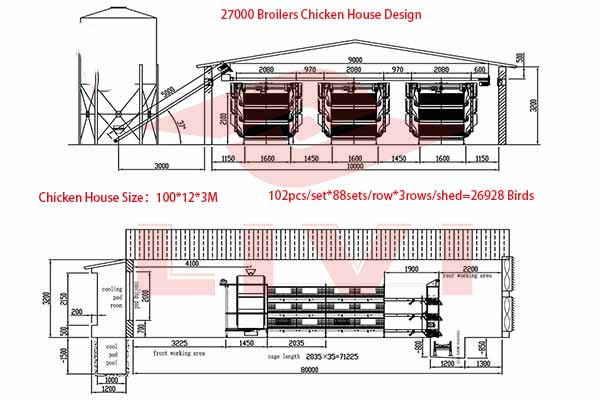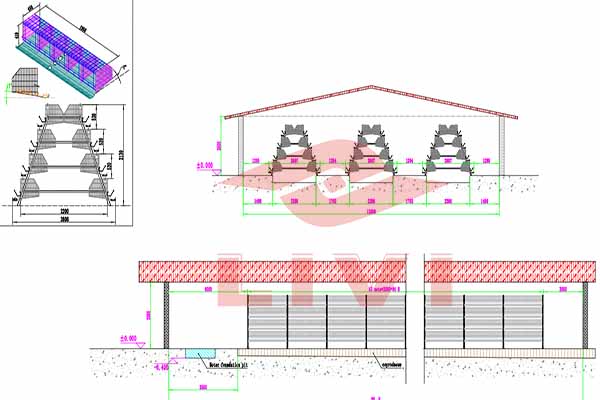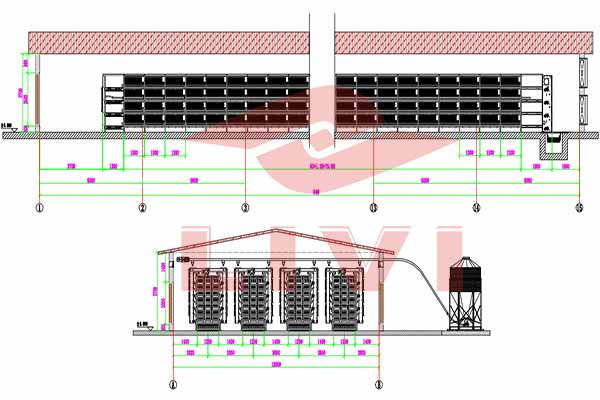Poultry Climate Control System for 100,000 Chickens in Zambia: The Ultimate Guide
Ensuring the health and productivity of 100,000 chickens in Zambia’s challenging climate requires a robust and efficient poultry climate control system. This guide will explore the essential components and considerations for setting up an effective system tailored to the needs of large-scale poultry farms.
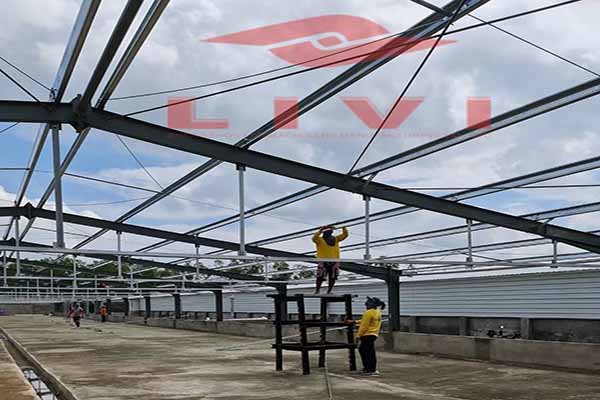
Key Components of a Poultry Climate Control System
- Temperature Regulation: Maintaining optimal temperatures for chickens is crucial. The ideal temperature for chicks is around 32-35°C, while adult chickens thrive in a range of 18-25°C.
- Humidity Control: Excessive humidity can lead to disease and reduced growth rates. A well-controlled humidity level of 50-60% is recommended.
- Airflow: Proper air circulation helps prevent respiratory diseases and maintains air quality. A flow rate of 1-1.5 cubic meters per minute per chicken is sufficient.
- Insulation: Proper insulation helps maintain the desired temperature and humidity levels while reducing energy consumption.
- CO2 Monitoring: Regular monitoring of CO2 levels is essential to ensure adequate ventilation and prevent respiratory issues.
Designing a Poultry Climate Control System for 100,000 Chickens
When designing a poultry climate control system for 100,000 chickens, it’s crucial to consider the following factors:
- Building Size: Ensure the building is large enough to accommodate the chickens without overcrowding.
- Zone Design: Divide the building into different zones to optimize temperature and humidity control.
- Ventilation System: Implement an efficient ventilation system to ensure adequate air exchange rates.
- Heating and Cooling: Use appropriate heating and cooling equipment to maintain the desired temperature and humidity levels.
- Insulation: Utilize high-quality insulation materials to minimize heat loss or gain.
Benefits of an Effective Poultry Climate Control System
- Improved Growth Rates: A well-maintained climate control system can lead to faster growth rates, resulting in higher yields.
- Reduced Disease Incidence: Proper temperature and humidity levels help minimize the risk of respiratory and other diseases.
- Lower Energy Consumption: Efficient insulation and heating/cooling systems can reduce energy costs.
- Better Working Conditions: A comfortable environment for both chickens and workers improves productivity.
Conclusion
Implementing a comprehensive poultry climate control system for 100,000 chickens in Zambia is essential for a successful large-scale poultry farm. By considering the key components, designing an efficient system, and maintaining optimal conditions, farmers can a
an efficient system, and maintaining optimal conditions, farmers can a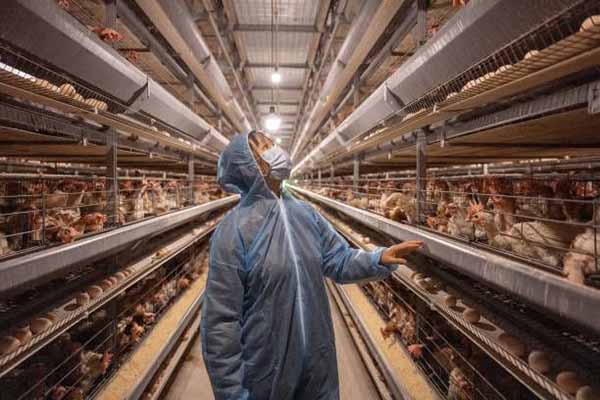 chieve higher yields, lower disease incidence, and improved energy efficiency.
chieve higher yields, lower disease incidence, and improved energy efficiency.
For a detailed poultry climate control system design and equipment quote, please contact us. We at LIVI Machinery offer free chicken farm design services and will be happy to assist you in your project.


